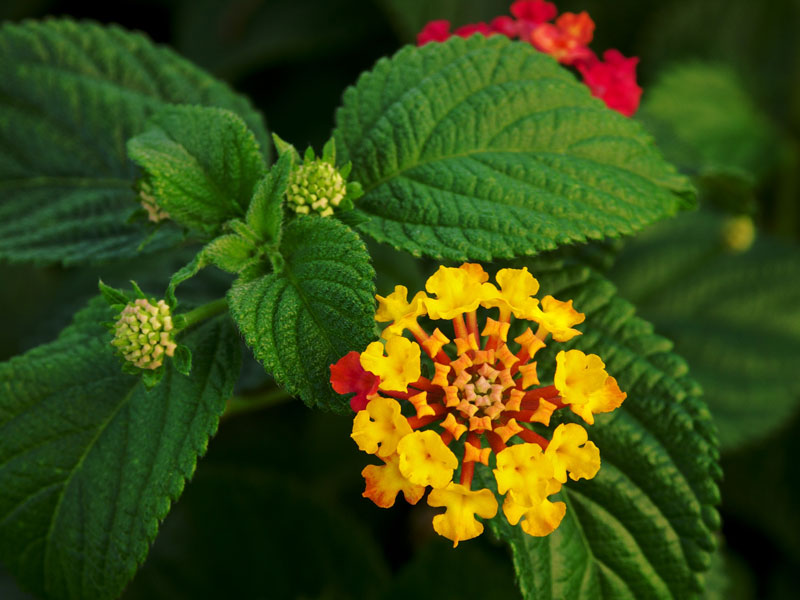Lantana (Lantana camara)
>Lantana is a vigorous, spreading shrub or untidy scrambler growing up to 2 metres or higher. Stems usually covered with short, stiff hairs and recurved thorns. Leaves are dark green, rough, hairy and paler below. The leaves give off a strong odour when crushed. Pink, red, crimson, orange, yellow or white flowers appear from September to April. Often several colours appear on the same compact, flat-topped flower head. FLowers are followed by glossy green fruits which turn purplish-black and are toxic.
